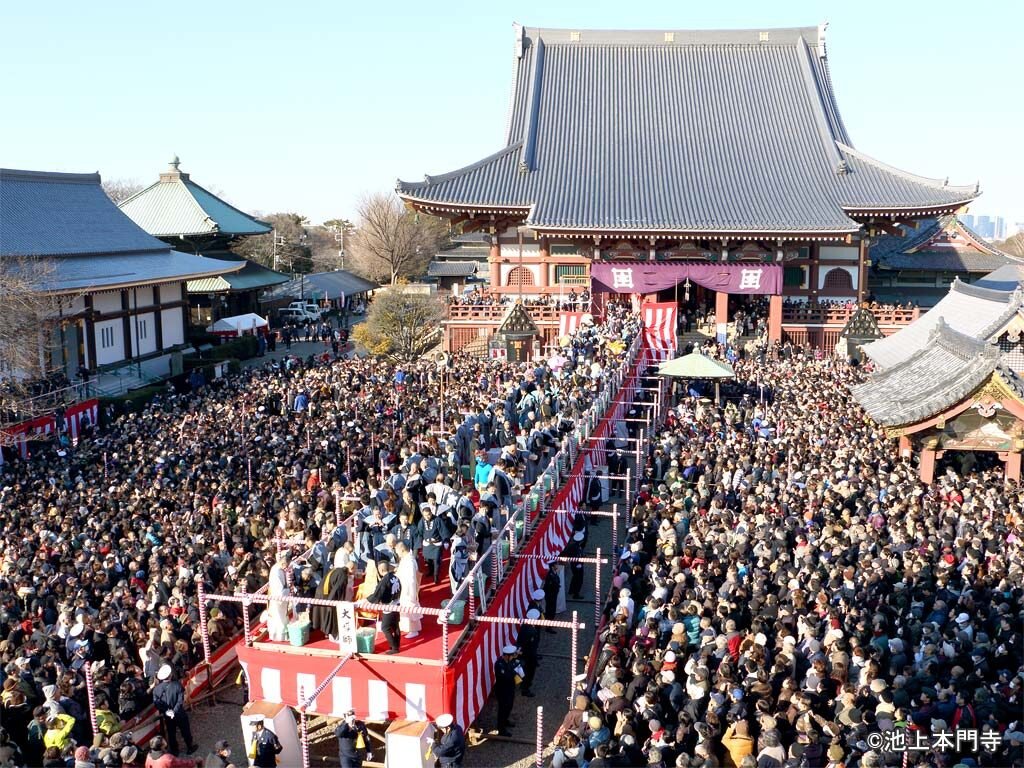Hatsumode, or New Years is the biggest holiday in Japan and celebrated between January 1st - 3rd. Most businesses will shut down for these three days and people will gather with their families. Each year is seen as completely separate and the New Years is used as a fresh start in Japan.
It is tradition to visit shrines and temples to pray for a good upcoming year. Big shrines and temples such as the Meiji Shrine and Sensoji Temple will usually attract more than a million people over the course of the three day holiday. The most impressive turn of events is at the actual turn of the year, the temples and shrines will countdown and ring large temple bells signifying the start of the year.
Taking a Japan tour on New Year can be both rewarding and frustrating. It can be rewarding in the sense that you can witness a very traditional holiday in Japan and take part in some of the biggest festivities at shrines and temples. However, during this holiday, most places will be closed. So, to the Japanese people it’s a few days off from work and life where they can just relax at home. But, as a tourist, after visiting a shrine and temple, there isn’t too much to do for the span of these few days.
Entrance fee: Free
Photo credit: Time Out Tokyo
Location: Meiji Shrine or Sensoji Temple.
Dates: Jan 1 - 3
Website: https://www.meijijingu.or.jp/en/ , http://www.senso-ji.jp/english/
Below are the map locations for Meiji Shrine and Sensoji Temple in relative order.
















